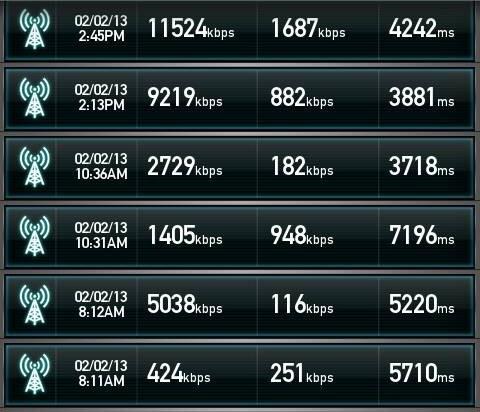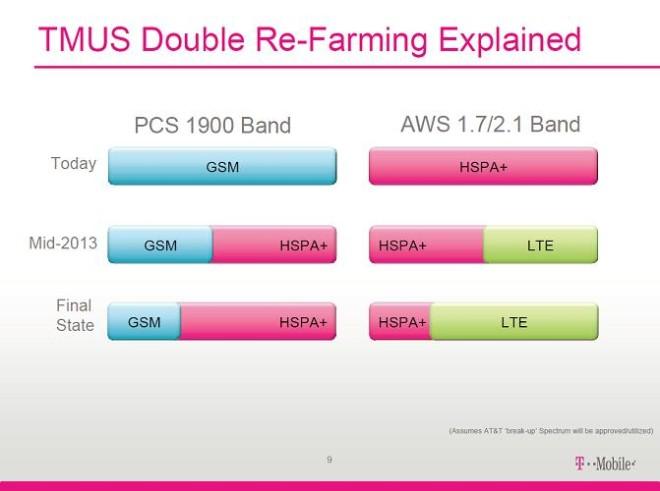Why Now Is A Great Time to Be a T-Mobile Customer
A few years ago, T-Mobile was borderline sick. The spectrum crunch was felt in full force by T-Mobile customers around the country. 1,500 milliseconds pings and dropped calls galore peeked their heads at every opportunity.

To add insult to injury, T-Mobile had no roadmap to rollout LTE and no cash or spectrum in sight to do so even if they wanted. Even though their DC-HSPA network, also called HSPA+ 42, could hold its own against its competitors’ LTE networks, the minds of many were already made up with the help of competitors’ advertising. T-Mobile was hardly in a place to offer competitive service in a large number of markets. Things were so rough, in fact, for good old Magenta, that its European parent company, Deutsche Telekom, even attempted to cut its losses and sell T-Mobile in its entirety to AT&T.
Thankfully for us T-Mobile fans and customers, the acquisition of T-Mobile by AT&T never made it through all the necessary rungs of governmental approval; AT&T was unable to find a buyer for all of the divestments required by regulators. As a result, T-Mobile received an excellent breakup package of a whopping $3 billion in cash and $1 billion worth of spectrum, as well as a cross-usage newtork agreement allowing T-Mobile and AT&T customers to roam on one another’s networks.
Refarm
With this newfound pile of cash and much-needed 1900 mHz spectrum, T-Mobile began their massive network modernization efforts, also called ‘reframing.’
T-Mobile formerly used the PCS band, the 1900 MHz spectrum range, for EDGE data and voice, and 1700 and 2100 MHz, called the AWS band, for 3G and 4G services. With the refarm, T-Mobile began splitting its HSPA+ service between the PCS band and the AWS band, with plans to eventually move the majority of its HSPA+ operation over to the PCS band. This translates to two things: interoperability of handsets and room for LTE on the AWS band.
This is a great thing for customers and T-Mobile’s business alike. Whereas customers were previously relegated to EDGE data when bringing their own handset (the iPhone being the most notorious example, but any other AT&T or international phone falls under this umbrella as well), now, in a growing number of markets, customers are able to take advantage of HSPA+ 21 data service with virtually any unlocked handset.
Phones
With T-Mobile’s network operating with a greater degree of harmony among domestic and foreign networks, flagship devices will be more easily obtainable due to the fact that manufacturers won’t need to implement custom/seldom used radios for just a small handful of carriers, bringing a wider variety of devices to T-Mobile’s lineup.
Now, more so than ever before, T-Mobile has a full and diverse portfolio of devices from the top and most desirable manufacturers running the latest and greatest operating systems. Google has always been nice to TMo, releasing its GSM variants of Nexus devices with AWS support, which has in a way always made T-Mobile the carrier of choice for the techy and tinkerer. Now, with the newfound iPhone 5 with AWS support, Nokia’s Lumia line of handsets sporting Windows Phone, and Blackberry’s newest offerings all gracing TMo’s airwaves, T-Mobile has a more robust and colorful smartphone lineup than ever.
And of course, the additional AWS spectrum and the reallocation of HSPA+, T-Mobile finally have a roadmap to rollout LTE.
Spectrum, Spectrum, Spectrum
If you’ve read this site for any length of time, or any other tech blog for that matter, you’ll know how vitally important spectrum is to the operation of a mobile network.
Spectrum can make or break a carrier’s ability to compete, so it’s easy to see why it’s discussed so frequently in the wireless industry. The more spectrum a carrier has, the more robust data connections are, the fewer dropped calls, and the greater number of simultaneous connections. Think of spectrum as a roadway. More spectrum means wider lanes and a lower degree of congestion.
Spectrum is one of the biggest reasons that now and the coming years are going to be great for T-Mobile and its customers. In addition to the breakup spectrum awarded to T-Mobile by AT&T, T-Mobile and Verizon also recently completed a spectrum swap, allowing TMo to cover an additional 60 million customers and offer more robust coverage in several top markets.
With the newly completed T-Mobile and MetroPCS merger, even more spectrum is brought into play. As we’ve mentioned in previous articles, T-Mobile plans to deactivate MetroPCS’s CDMA network and roll that spectrum into the GSM footprint. This will give T-Mobile serious competitive edge, having even more spectrum than even Verizon and AT&T in some areas.
Details are still emerging, but T-Mobile also is expected to bid on 600 mHz spectrum chunks next year.
Two Unlimited ‘4G’s
T-Mobile’s newly nascent LTE Network is by no means ubiquitous at this point, but having two ‘4G’ technologies means that you probably won’t mind being outside of LTE reach because Magenta’s backup HSPA+ network is nearly as fast.
Though it’s debated whether T-Mobile’s HSPA+ network should be called 4G or something else along the lines of 3G+, HSPA+ can definitely stand on its own against LTE, even surpassing the speeds of some competitors’ LTE speeds in certain areas.
And this is T-Mobile’s fallback network.
With Verizon or Sprint, being outside of an LTE area puts you on CDMA 3G, called EVDO. Real-world speeds of EVDO range from 500 Kbps up to about 2 Mbps on a good day, meaning that there is a very, very large gap between EVDO and LTE performance, leaving much to be desired.
T-Mobile’s fallback HSPA+ network, which it still calls 4G, can provide real-world speeds of over 15 Mbps, meaning that in the absence of LTE, your phone, tablet, or hotspot can cruise along the interwebs at around the same speed, or even faster, than Verizon’s LTE network in some market.
The best thing about this is that both of these networks will be simultaneously active. And T-Mobile actually still offer unlimited data on both of these networks, unlike some larger rivals.
All in all, the combination of recent cash, spectrum, and technology will give T-Mobile a distinct advantage in the market.

